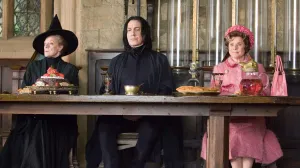The Multiversity: Society of Super-Heroes: Conquerors from the Counter-World #1 (henceforth referred to as SOS #1 to avoid the dreaded double hyphens) is an enjoyable romp in a pulp-inspired superhero universe. That is probably not a description of Grant Morrison’s much anticipated series that many readers expected, but it’s certainly an accurate one.
Videos by ComicBook.com
SOS #1 references the multiverse and the concept of a cursed comic book, but the metatextual components of this issue are minor, especially when compared to much of Morrison’s bibliography. Those references often feel like they were added as something of an after-thought as well. The focus of this issue isn’t on the landscape of the multiverse or the invisible borders constructed between fiction and reality. Instead, SOS #1 centers around the exploits of a group of super-heroes based on members of the Justice Society of America with a strong pulp influence added.
The Society of Superheroes (S.O.S.) is composed of Doctor Fate, The Atom, Lady Blackhawk, Green Lantern, and the Immortal Man. Although the points of reference are clear, Morrison and artist Chris Sprouse provide many characters with a unique feel and characterization. Doctor Fate is the star of the book blending the character’s classic mysticism with a heroic style of leadership. It’s a take on a decades old character that pops and feels new. Others like Lady Blackhawk and The Atom are barely discernible from previous incarnations.
Sprouse’s design work is the best part of this alternate universe. All of the costumes, as well as the diverse array of urban and jungle settings, take on a life of their own. Doctor Fate and Green Lantern, especially, blur the line between pulp adventurer and golden age superhero. Sprouse blends elements of each into engaging new uniforms. Baggy pants, mystic totems, and pistols all provide visual signifiers about what genre Morrison and Sprouse are tapping into in this comic. Sprouse’s background and style lends itself to the pulp genre very naturally. His work on Tom Strong with Alan Moore revealed his particular skill for evoking the 1930s and 40s and connecting it to the fantastical science fiction and adventure elements found in dime novels. His designs, better than any other component of SOS #1, makes this version of earth memorable.
The purpose of delving into pulp heroes and the Golden Age of the DC universe is less obvious. There are some clear connections between the ethos and ideas of Golden Age superhero comics and modern publications. Morrison and Sprouse evoke specific connections to comics like Identity Crisis, calling out the unheroic behavior of some heroes. There is a vague condemnation of immoral acts committed within the context of the genre. However, the story never attempts to dig into this idea, only making brief references and then moving along. SOS #1 lacks any depthful commentary on the fictional genres and periods it evokes.
The story, like the series itself, is structured to fit between two bookends. In this instance, the bookends are single panel pages with a long vertical block of narration. These two pages help to place SOS #1 within the context of The Multiversity, functioning as prologue and epilogue. Although technically narrated by the Immortal Man, they are effectively Morrison dictating the story in prose. Additions like this may be important to weaving Morrison’s larger plans together, but fall flat within the context of a single, standalone story. They are the weakest pages of the entire comic.
SOS #1 is a lot of fun. It packs some great character designs, action, and plenty of references for superhero fans all into a comic that reads well on its own. There’s nothing particularly innovative or transgressive about this comic though. Expectations of a superhero comic that would transform the medium or alter perceptions have been set too high. Morrison and Sprouse tell a fun story and that’s enough, even if it’s not what many readers may be expecting.
Grade: B








